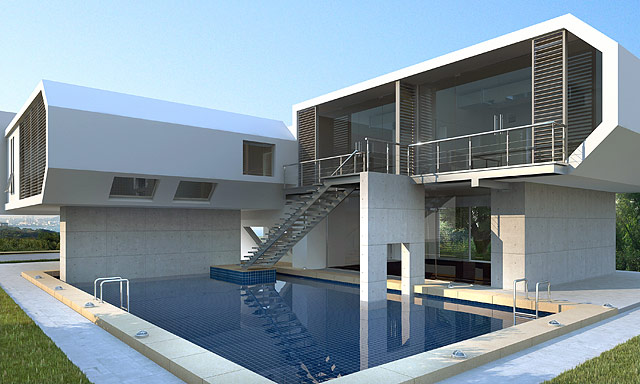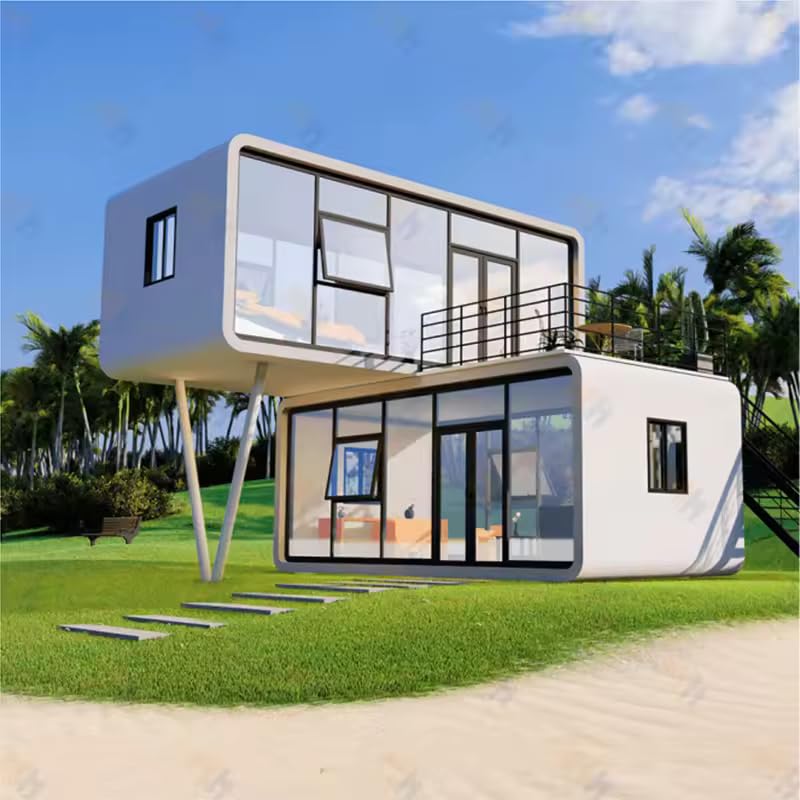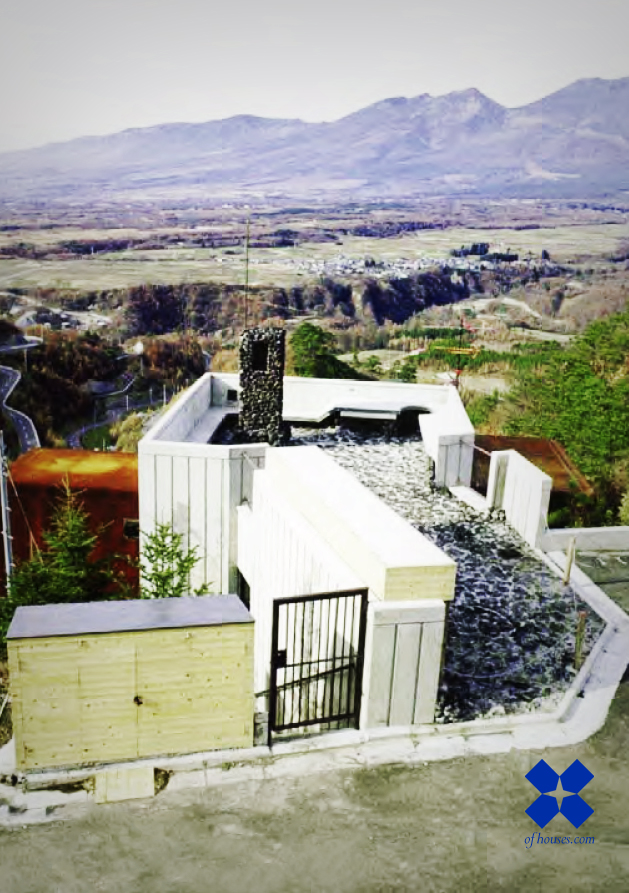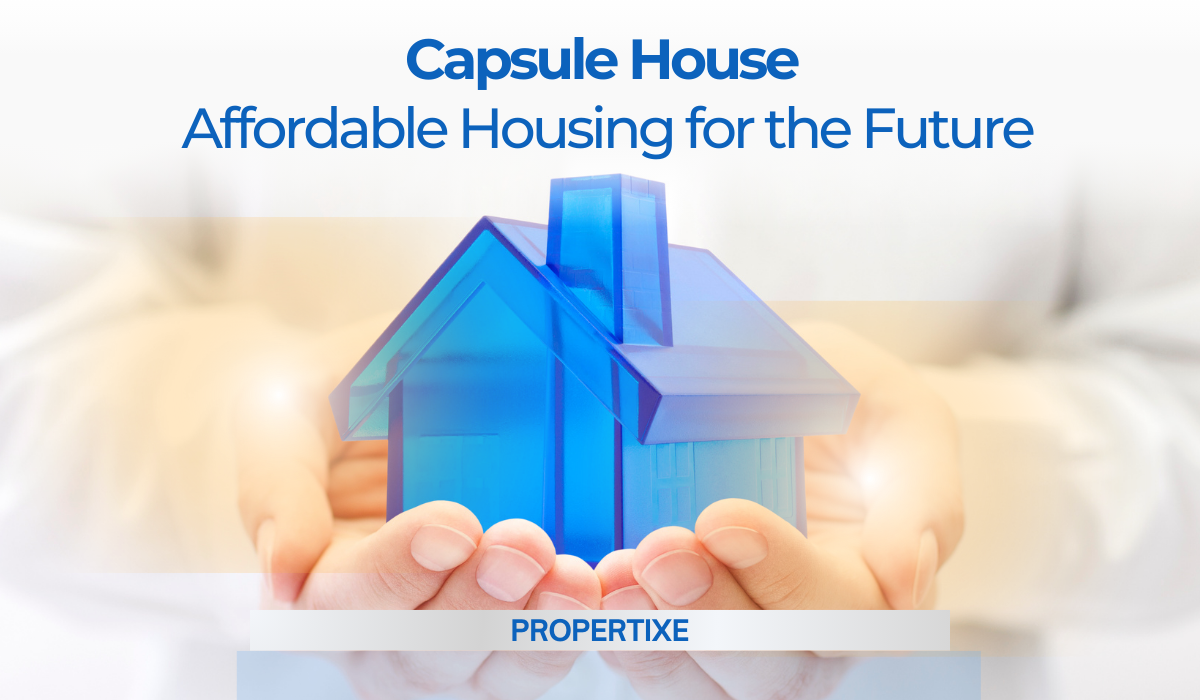Introduction
The world currently struggles with the issue of housing, which is growing all over the world. While urban populations continue to grow, traditional homes are less affordable for the typical citizen. In the same way, there is a need for environmentally eco-friendly and efficient living that is never more urgent. That’s where the idea of a capsule house comes in -an imaginative idea that is aimed at addressing the increasing demand for affordable homes while making use of the area intelligently and effectively.

A capsule home is an extremely compact and prefabricated housing unit that is designed to maximize the utilization of space. Consider it an extremely functional and modular house with a minimal layout. They aren’t just inexpensive; they’re also green as well as energy efficient, and easily assembled. In this post, we’ll dive into the many reasons capsule houses may be the solution for addressing the housing issues of the future. The article will discuss the advantages and real-world case studies and my reasons for believing that capsule houses are set to become the new standard of low-cost living.
Problem: The Housing Crisis
Around the globe there is an important shift in the way individuals reside. Cities are expanding at a rapid rate, which is estimated to be 68% of the world’s populace expected to reside in urban areas by 2050 in accordance with the United Nations. Rapid growth in urbanization has created huge shortages of decent housing options as the cost of housing skyrockets, leaving numerous people struggling to find an affordable home.
In large cities like New York, London, and Tokyo, The costs of living have been rising, which has forced average renters and new buyers from the marketplace. The report of the National Low Income Housing Coalition revealed that, in the U.S., there is a need for more than 7 million affordable rental apartments that are geared towards renters with very low incomes. The gap in affordability for housing has been growing, making it urgent to find creative housing solutions that are different from conventional models of real property.
The capsule home can be seen as an attractive and innovative option. Small, modular homes can be constructed at a low cost and designed to be adapted for countryside and urban settings. Because they take up less space and utilize fewer resources, Capsule Homes promises to offer more affordable housing alternatives, but without any compromise in the standard of living.
Agitation: The Strain on Traditional Housing Solutions
The traditional housing model is failing to keep up with the demands of the contemporary world. We can look at the growing price of construction. The year 2022 saw construction material costs increase by more than 20% across the globe, principally caused by disruptions to supply chains as well as inflation. Furthermore, labor shortages experienced by the construction sector make it difficult for builders to finish the projects within time and to stay on budget. The combination of expensive costs and long timeframes make conventional housing developments less affordable to many.
When homes are built and are occupied, they can remain vacant for a long time. Based on data from the U.S.-Census-Bureau, more than 12 million houses were empty in the year 2020, and at the same time, more than 11 million households faced housing cost problems. In reality, conventional housing strategies aren’t enough to meet the increasing demand. The lack of efficiency in land utilization can contribute to the problem.
Additionally, the environmental impact of homes built in the past is an issue. The construction industry accounts for 40 % of the carbon emissions in the world accordance with the World Green Building Council. The problem is exacerbated because of the lack of efficiency in energy use of numerous buildings in the present. Capsule-style houses, however, are constructed with green materials and eco-friendly plans that limit environmental impact.
Capsule homes are a fantastic chance to address the issue of affordability in housing and environmental problems associated with traditional homes. It is a path to take that isn’t reliant on old and unsustainable models.

Solution: How Capsule Houses Address These Problems
Capsule homes are a type that is modular and made to make the most of space while reducing construction costs. It’s simple: by cutting down on the dimensions of the home and concentrating on smaller living areas, these homes provide all the necessities that a homeowner needs without excessive frills that increase cost.
A typical capsule-style house is tiny, usually about 100 to 200 square feet, and is constructed using readily available materials, which makes the entire building process less expensive. They are typically built at factories and later moved to their desired locations and relocated to reduce building time and labor expenses. By creating a capsule home, it is possible to make an affordable and comfortable home within a couple of weeks.
Case Study 1: Japan’s Capsule Hotels
Japan has been leading the way in capsule dwellings for years. The idea of capsule hotels in which guests stay in tiny portable pods with private bathrooms has become a well-known image of cost-effective and efficient use of space. But what began as a way to provide temporary accommodation is now evolving to become a permanent housing option.
Tokyo has begun to implement capsule homes in order to tackle the shortage of housing. The company Nomad Pods offers affordable, compact capsules that can be erected in empty urban areas and help address the housing shortage in Tokyo. They are built to be modular, and they can easily be mixed with others to make larger living spaces.
With regard to Nomad pods, each unit has a total of 160 square feet. It has spacious designs, including folded-out beds, tiny bathrooms, as well as multi-purpose furniture. The cost of constructing one unit is approximately $15,000 – far lower than an average home in Tokyo, which can well exceed $300,000. The model is already gaining popularity within Japan as well as other nations might soon follow the same model.
Case Study 2: Europe’s Tiny House Movement
The movement towards tiny houses and the tiny house movement, especially in Europe, has also been a driver behind the current trend towards capsule housing. In places such as Germany and France tiny houses are used to provide low-cost, eco-friendly alternatives for traditional homes. Organizations such as Tiny House Europe are advocating for the construction of small and portable dwellings that can be set up on vacant land that is not being used for farming, like rooftops in urban areas.
The cost of these homes can differ, but generally, they can cost anywhere from $20,000 to $50,000 for construction, which is significantly less than what it costs to purchase an ordinary home. The homes are built by using green materials and energy-saving elements, making the ideal choice for the one who want to lower their carbon footprint. The movement towards tiny homes is growing in popularity as an option for housing, and the underlying principles of them are in perfect alignment with the principles of capsule dwellings.
Why I Think Capsule Houses Are the Way Forward
If I consider how housing will evolve in the near future, compact houses are logical. Being someone who’s had the privilege of living in big homes as well as smaller ones, I’ve realized the importance of maximizing the use of space. According to me, having smaller homes doesn’t need to sacrifice the comforts or living quality. It often results in a simpler and more enjoyable life.
I’ve always been a person that believes in sustainability. And the ecological benefits of the capsule homes are a big aspect for me. They aren’t just constructed using environmentally friendly materials but also leave less carbon footprint than homes built traditionally. If you’re like me and concerned about environmental sustainability, these homes provide a beautiful solution to lessen our footprint on our planet.
There will be problems. Particularly, we’ll have to revise zoning laws as well as construction regulations in order to allow for more efficient use of these homes. It is my opinion that government can help in creating homes that are more accessible by lessening the restrictions of regulations, and allowing builders to build cheaper and more modular homes.
However, overall the homes are gaining popularity, because people are seeking affordable, sustainable affordable, and sustainable living alternatives. They provide a new way to live that could aid in meeting the requirements for the coming years. I find it exciting to imagine the way this new trend will shape how we live our lives for the next 50 years.
Overcoming Challenges: Practical Considerations
However, despite the numerous benefits, capsule homes do have several issues that must be dealt with if they wish to become a widespread alternative to housing. One of the major obstacles is the perception of people. A lot of people associate smaller homes as having lower standards or even temporary housing. As more people become aware of the positives of compact homes, I am convinced that this perception is slowly fading away.
Another issue is the absence of infrastructure within many regions where capsule residences could be constructed. In contrast to traditional houses built in areas that are easily connected to power and water, as well as sewage and water systems, Capsule houses might require innovative strategies. However, new techniques like solar panels and rainwater harvesting systems, as well as composting toilets, can solve these problems and make capsule homes more sustainable and self-sufficient.
Overcoming these challenges is going to require cooperation between engineers, architects, as well as local authorities and communities. However, given the successes of capsule housing in cities such as Japan and Europe I’m optimistic regarding their ability to grow across the globe.

Conclusion
The issue of housing is one of the biggest problems facing our society today, as traditional options are not working. Capsule homes offer an exciting alternative to making affordable housing possible for a vast majority of individuals. Because of their modular, compact design, they do not just provide space-saving living, but they also meet the rising need for environmentally sustainable green housing options.
From Tokyo’s hip hotel chains to Europe’s small house movements, actual proof shows that these residences are practical and cost-effective. I’ve observed their possibilities personally, I am convinced they could be a key to a eco-friendly and sustainable living space. If you’re a professional in your 20s with a difficult time paying rent, or an urban dweller seeking an easier life or someone dedicated to sustainability and sustainability, these homes are an excellent option.
Moving forward and forward, we are seeing that homes built in capsules could be one of the major players in the coming years of housing. To me, it’s more than an unimportant trend; it’s a crucial answer to the problems our society is facing.
FAQS
What exactly is a capsule home?
A capsule home is a tiny, modular home that is designed to make the most use of a small area. They are usually prefabricated and efficient in space, providing all the essential amenities of a home within a smaller footprint.
What is a capsule home? How does it distinguish itself from other types of dwellings?
Contrary to conventional houses, capsule homes are considerably smaller and typically measure between 100 and 200 square feet. They are modular, and they can be built quickly using fewer materials, making these houses more cost-effective and easy to construct.
Are they affordable for capsule homes?
Indeed, they can be more affordable than conventional houses due to their small style, low-cost construction strategies as well as the use of eco-friendly products. A typical capsule home can be priced between $15,000 and $50,000, depending on its size and features.
Are capsule homes able to be used to create permanent homes?
Absolutely! Though capsule homes were initially designed as hotel-style or temporary lodgings (like hotel capsules in Japan) However, they are being developed as long-term, fully efficient homes that can be used for long-term life.
How can capsule houses be green?
Capsule houses are typically built with eco-friendly materials and designs that are energy efficient. The small size of their homes also means they leave a less carbon footprint, consume fewer resources, and generate less waste than traditional dwellings.
How can capsule house houses be found?
Capsule homes can be set up in rural or urban zones. Capsule houses are flexible and are able to be built on empty urban areas, roofs, rooftops, or in rural zones where the availability of land isn’t a problem. The small size of these structures allows them to be used in urban areas with small spaces.
What are the major advantages of capsule homes?
Capsule homes offer a variety of benefits in terms of affordability, speedy construction, energy efficiency as well as sustainability. Capsule houses can provide a solution to the affordability of housing as well as reduce the environmental impact.
What is the time frame to construct a capsule home?
Because factories construct the capsule houses, they are able to be constructed quickly. The majority of capsule homes can be built in couple of weeks, as opposed to many months or even years needed to make traditional homes.
What are the challenges capsule homes have to face?
The biggest challenges are people’s perception (as tiny homes can be thought of as being inadequate) and zoning laws as well as infrastructure requirements (such as water access as well as electricity). With the advancement of technology they can be resolved.
Are there any actual instances of capsule homes that are being utilized?
Yes! Yes! In Japan, there are capsule hotels that have transformed into permanent housing options, such as Nomad Pods in Tokyo. In Europe, the small houses trend is growing in popularity as modular and affordable houses are being built as permanent residences in cities such as Berlin as well as Paris.

